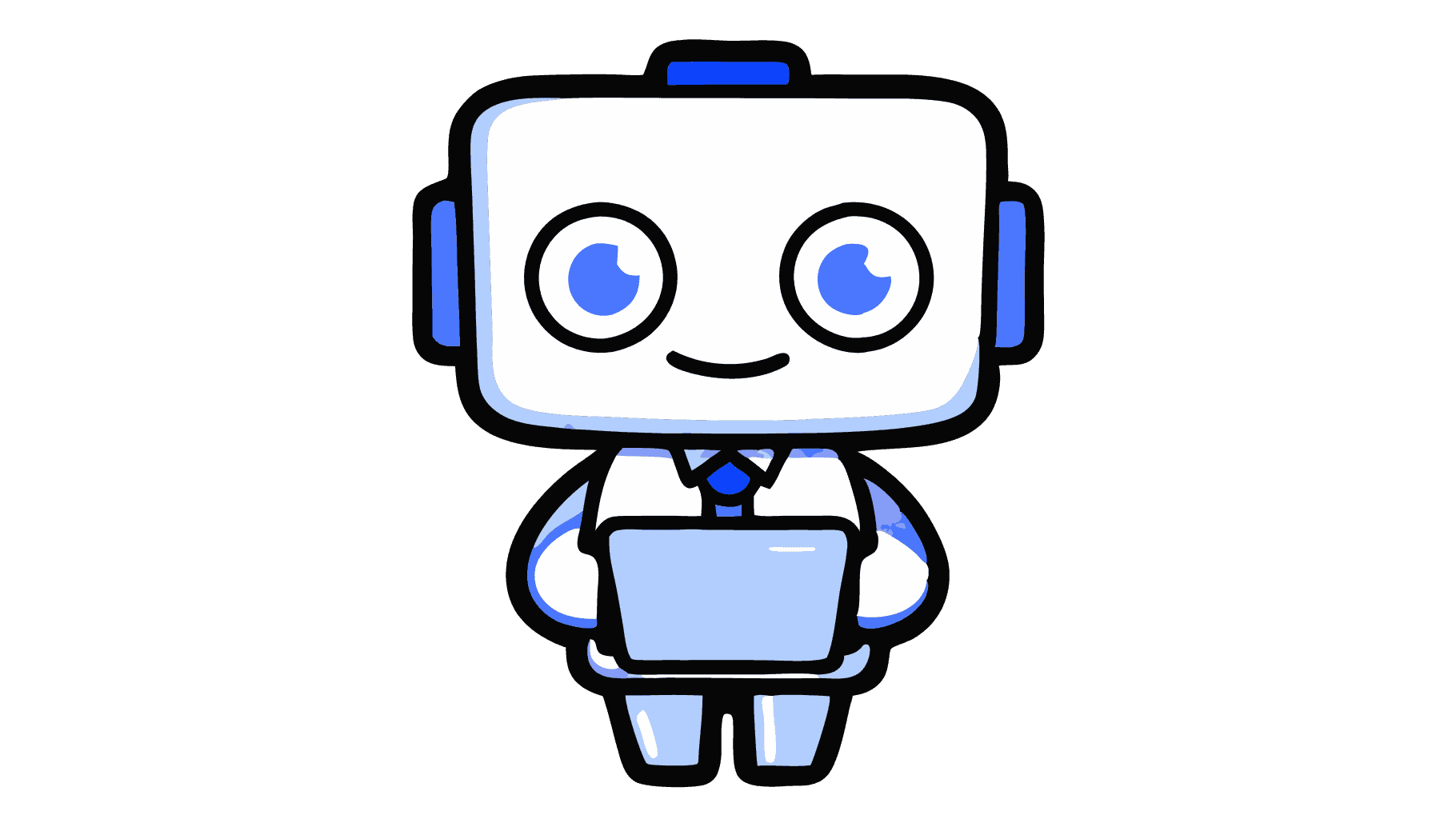
Generative AI for Beginners: A step-by-step guide
1A few years ago, discussions about generative AI didn't exist, but now, it’s the latest trend everyone discusses in every industry. In the marketing industry, people are talking about AI and how it is making their work easier. And to be honest, a lot has changed, especially with the rise of generative AI.
The market size was projected to hit $36.06 billion in 2024. Numbers don't lie; this is a clear sign that generative AI is not slowing down anytime soon. Thus, various industries, such as marketing, advertising, health care, software development, manufacturing, and the supply chain, must adapt to the new technology.
However, if you are a beginner in generative artificial intelligence, don’t worry. This article will help you learn the basics of generative AI with our simple beginner’s guide.
Discover the world of possibilities AI offers and start creating unique projects today!
What is Generative AI?
Generative AI, or GenAI, is a type of neural network technology that uses AI to create and produce various types of content, such as images, text, video, audio, and concepts. The main reason behind the current growth in generative AI is the simple user interfaces that allow for creating high-quality content within seconds.
To some, this technology might seem outdated, but it was introduced in chatbots back in the 1960s. The technology has undergone some developments and advancements, and recently, with the introduction of a type of machine learning called generative adversarial networks (GAN), generative AI can create quality images, audio, and videos of real people.
Using machine learning, neural networks such as Jadve AI use the given data to understand what the user wants and generate relevant results. For example, I asked Jadve AI to highlight five tips that I use to increase leads from my Facebook page. Unlike humans, generative AI isn’t capable of thinking independently and reasoning. It only depends on the data provided and interprets it to give an accurate response.
These new advancements in generative AI have opened new opportunities, including creating deep educational content and movies. They have also unlocked concerns about cybersecurity attacks and forged videos and images that can damage businesses.

Types of Generative AI Models
Generative AI consists of different techniques and models that generate quality and unique content that looks just like human-created content. Different generative AI models exist, each with unique features and approaches to developing content. Here are some of the most common types of generative AI models:
| Generative AI Model | Definition |
|---|---|
| Variational Autoencoders (VAEs) | Variational autoencoders (VAEs) are a type of generative AI model that learns how to encode data into a certain latent space and then decode the data back to reconstruct the original. VAEs learn the probabilistic representations of the given data, giving them a chance to generate samples from the given data. This generative AI is mostly used to create images but can also be used to create texts and audio. |
| Generative Adversarial Networks (GANs) | Generative adversarial networks entail two types of neural networks, the discriminator and the generator, which compete against each other. The discriminator's task is to differentiate between fake and real data, while the generator generates only synthetic data like text, sound, or images. The generator focuses on creating realistic data that aims to deceive the discriminator. On the other hand, the discriminator enhances the ability to differentiate which data is accurate from the generated one. |
| Recurrent Neural Networks (RNNs) | This type of generative AI is a neural network used to process sequential data like time series and natural language sentences. Recurrent neural networks can also predict the next element in a given sequence for generative tasks. One disadvantage of RNNs is their limited long-sequence generation because of their vanishing gradient challenge. However, they have introduced a Gated Recurrent Unit (GRU) and a Long-Short-Term Memory to help address the limitation. |
| Autoregressive Models | Autoregressive is a type of generative AI that generates data, one at a time, conditioning the creation of each element on the last one. They are used to predict the probability distribution of the component that will be given next with the previous context and then sample it from the given distribution to create new data. One typical example of autoregressive models with usage models is an iterative pre-trained transformer that can generate contextually and coherently appropriate text. |
| Transformer-Based Models | Transformer-based models are gaining popularity in generative and natural processing language tasks. One known transformer is the GPT series. This type of model uses attention mechanisms to build relationships between various elements effectively in a sequence. They are also parallelizable and can do long sequences, making them suitable for creating contextually and coherently relevant tasks. |
Benefits of Generative AI
Since its launch, generative AI has transformed various industries by introducing them to new capabilities and possibilities. The technology can generate unique content, offering users a wide range of benefits. Here are some of the main advantages of using generative AI:
1. Enhanced Customer Experience
Generative AI helps businesses improve their overall customer experiences by offering personalized interactions. The technology can study your brand and what you offer. Then, it combines this information with customer data to create customized experiences.
For instance, if you have an e-commerce store, you collect customer demographics and know the products your customers buy mostly. Thus, you can match their preferences and create personalized content using generative AI that offers them more customized recommendations. This results in a better customer experience as your customers get relevant product recommendations.
2. Improved Creativity and Innovation
Generative AI plays a crucial role in fostering creativity and innovation. By leveraging the power of neural networks and machine learning, generative AI creates new and unique content, thus enhancing creativity and innovation.

With generative AI, users can save time as the technology automates the creation of content such as social media posts, blog posts, marketing copy, video creation, and graphic designs. For example, if you want to create a social media post, you simply tell the neural network what you want, and it will generate relevant content within seconds.
3. Advanced Health Care Research
Generative AI is advancing healthcare. It makes the healthcare research process easier for researchers, as it can quickly suggest drug ideas and other medical-related innovations, unlike doing it manually.
Additionally, generative AI excels in generating synthetic test data. Previously, researchers required human subjects to generate test data, but now AI can create synthetic patient data, allowing researchers to conduct tests in advance before trying them on humans.
4. Improved Market Innovations
Generative AI helps companies analyze vast amounts of data in seconds, offering insights that would otherwise take humans much longer to uncover. This ability to quickly generate actionable insights allows businesses to innovate in their marketing and product development strategies.
Moreover, generative AI helps companies identify new growth opportunities, reducing the associated risks with innovation.
5. Improved Customer Service
Generative AI has revolutionized customer service by enabling chatbots that can offer immediate, personalized responses. These AI-powered assistants are available 24/7, handling customer inquiries efficiently.
When the issue is too complex for the bot, it seamlessly transitions the customer to a human agent for further assistance.
Generative AI Applications
Generative AI is taking over various industries such as healthcare, software development, marketing, and advertising, financial services, media, and entertainment. Here are some major industries that apply generative AI to make their work easier:
1. Advertising and Marketing
Generative AI handles many tasks in the advertising and marketing industries. The tools automate content creation, generate personalized recommendations, and optimize SEO. Businesses use generative AI for everything from creating social media posts to generating product descriptions.
2. Healthcare
In healthcare, generative AI helps in discovering new treatments, augmenting medical images like MRIs, and generating synthetic patient data. It can also generate and analyze reports based on images and create new images to show how diseases progress over time.
3. Software Development
Generative AI accelerates the process of coding by generating code faster and more efficiently. It can also be used for automating testing, identifying potential issues, and providing bug fixes in software development.
4. Manufacturing
Generative AI improves the manufacturing process by optimizing design and production processes. It can predict potential issues and help in supply chain management by analyzing vast amounts of data.
5. Media and Entertainment
Generative AI is helping the media and entertainment sector by enabling faster content creation. It can generate visuals, audio, and even help in editing videos and producing sports highlights.
6. Financial Services
In finance, generative AI can streamline tasks like monitoring regulatory changes, drafting documents, interpreting communications, and making investment strategies easier to understand for both investors and clients.
Risks of Using Generative AI
Despite the many benefits, there are some risks associated with using generative AI. Here are a few to consider:
1. Accuracy
Generative AI tools can sometimes produce inaccurate or fabricated responses. Always verify the content generated before using it in real-world applications.
2. Lack of Transparency
Generative AI tools like Jadve AI can be unpredictable. Even the companies that develop these tools sometimes don’t fully understand how their models generate content.
3. Fraud and Cybersecurity
The rise of generative AI tools has also led to an increase in cybersecurity risks. Deepfake videos and synthetic media can be used for fraudulent activities, so it's important
to implement strong security measures.
4. Data Privacy
Using generative AI requires collecting a large amount of data. If the data used isn't managed responsibly, it can lead to privacy concerns, especially in healthcare or finance industries.
Examples of Good Generative AI Tools
Generative AI is now at the forefront of creating impactful tools across many industries. Some of the popular tools include:
1. Jadve AI
Jadve AI is an AI-driven chatbot designed to simulate human conversations. It has made waves in various fields, from customer support to content creation. It can generate text, solve queries, write essays, and assist with coding tasks.

2. DALL·E
DALL·E, also developed by OpenAI, is a powerful image-generation tool. Users can provide a text prompt, and DALL·E will create realistic and imaginative images based on that description. This tool has seen applications in art, design, and marketing.
3. Jasper AI
Jasper AI is widely used in marketing and content creation. It helps generate text for websites, blogs, social media, and ads, saving time for content creators and marketers. It's a versatile tool that supports multiple languages.
4. Runway ML
Runway ML offers tools for creators to experiment with machine learning models to generate images, videos, and sounds. It is designed to be used by creative professionals, offering advanced AI-powered video editing capabilities.
5. Synthesia
Synthesia allows users to create videos using AI-generated avatars. It has become especially popular in corporate training and educational content, where organizations can produce informative videos without the need for actors.